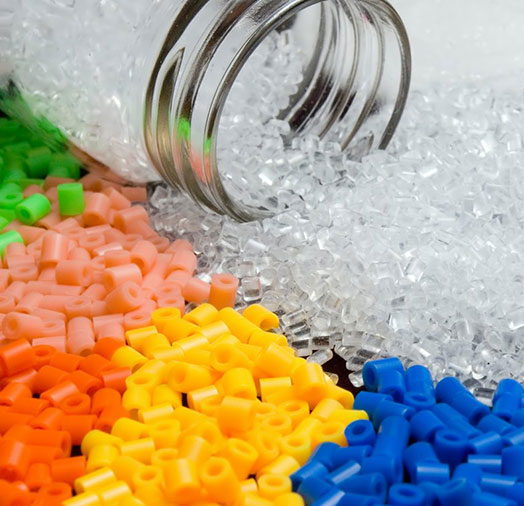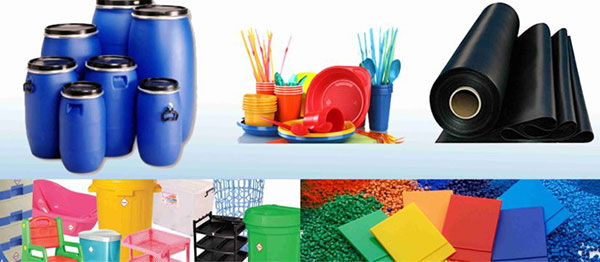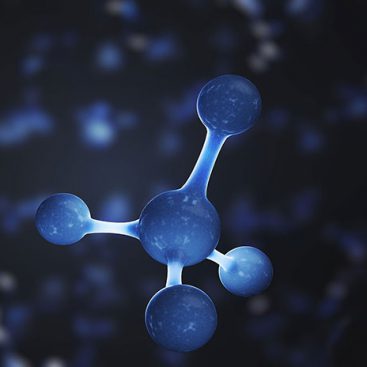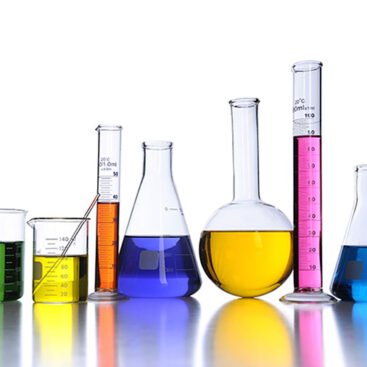Petrochemical Product
Polymer Products
It can be said that since the beginning of life, humans have been using polymer materials without knowing what a polymer is. Polymers are materials whose molecular structure consists of many repeating components.
Today, the various applications of polymer materials in multiple industries are such that almost no industry can be found without traces of these materials. This is to the extent that polymer materials have created many changes in some industries. Therefore, it can be said that using these materials in some sectors has created an unprecedented revolution in them.

Polymer
These substances are chains of hydrogen and carbon atoms. These materials have crystalline order on a small scale (a few atomic distances) but do not have a crystalline structure on a large scale. The properties of polymers can be understood by knowing the molecules and their arrangement.
Polymer (resin) has a main carbon skeleton with hydrogen atoms; they are a chain of carbon and hydrogen atoms. The variety of properties of these materials depends on the degree of polymerization (i.e., the size of the molecule) and the presence of sub-branches.
Polymer is the name of the raw plastic product that exists in nature in different forms. Polymer materials have a wide variety and are selected for plastic products according to the final product. Plastic is the name given to artificial polymers.
Chemically, these materials are made up of single units called monomers, which are linked with millions of other molecules like themselves to form long chains. The chain may be linear or have several branches, and several transverse connections may connect the chains.
The length of these chains, the number of branches they have, and how tightly they are linked together determine the physical properties of the final plastic.
Advantages of polymer
The reason for the extensive application of polymer in the industry can be summarized as follows:
- The process of making it is easy.
- They are very cheap.
- They have good corrosion resistance.
- They are very flexible and malleable.
Polymer limitations
Polymer molecules of different sizes are placed next to each other, and the bond between adjacent chains is fragile and polar, so they have the following practical limitations:
- They do not have a specific melting point
- They are solid at room temperature.
- They are not resistant to oxygen, ultraviolet rays, and bacteria.
- They are brittle at temperatures lower than ambient.
- They have an amorphous, crystalline structure or a mixture.
- They burn at a relatively high temperature.
Types of polymers
Generally, polymers are divided into three categories: thermoplastic, thermoset, and elastomer. In the meantime, there are materials such as glass wool, a silicon polymer.
1. Thermoplastics
In thermoplastics, there is a simple structure of polyethylene in polypropylene, polystyrene, polyvinyl chloride, and Teflon, which changes the nature of the molecule by replacing the hydrogen atom in the aspects of the main structure. As more molecules are added to the backbone, the chain stiffens.
In nylons, acrylics, acetates, cellulosic, and polycarbonates, the addition of polar groups, i.e., hydrogen bonding, increases strength. Finally, using side connections, for example, in polyester and rubber, the hardness of the thermostat plastic group is reached.
Applications of thermoplastics:
- Polyethylene (PE) is used in making kitchen utensils, toys, and sports equipment.
- Polypropylene (PP) is used to make the body of pumps, toilets, carpet fibers, tanks, and luggage.
- Polyvinyl chloride (PVC) becomes soft and complex
- Polytetrafluoroethylene (PTFE) or Teflon is used in making gaskets and non-stick coatings.
- Polyetherimides (PI), used in the aviation industry, fuse boxes, and electronic devices.
- Polyamides (nylons) manufacture bearings without needing lubrication, anti-wear parts, wipers, and speedometer gears.
- Polyoxymethyl is used to manufacture gearboxes, gears, and pump parts.
- Polymethyl acrylate makes magnifying glasses, lenses, watch glasses, and sunglasses glass.
- Stall is used to make car parts in the fuel system, seat belt, car lift handle, and pens (auto).
2. Thermostats
Resins with a molecular network structure and mainly covalent bonds have been formed. For this reason, thermostats have high strength, stiffness, and hardness, so they are brittle. The network structure that creates a vast molecule has a decisive effect on the properties of the thermostat.
Applications of thermostats:
- Phenolics: electrical switches, clamps, small handles, adhesives
- Amino resins: clamps and small handles, buttons, all kinds of resistant adhesives, melamine pieces filled with cellulose.
- Unsaturated polyesters: glass-reinforced for car and airplane dashboards, small boat hulls, seats, kitchen and bathroom parts
- Epoxy resins: protective and decorative coatings, insulators for high voltage, switches, and transistors.
- Silicones: adhesives, gaskets, sealants, putty, and seals
3. Elastomer
It consists of synthetic and natural polymer materials (such as raw rubber). Therefore, it is a heavy polymer with a complex structure that has rubber-like behavior and characteristics. It is generally used to manufacture belts, car tires, O-rings, hoses, and electrical wire covers.
In terms of hardness, tires are divided into three categories: soft, semi-hard and hard. The higher the amount of sulfur, the more complex the rubber. Tires have five components: sulfur, accelerator, polymer (about 45 to 65 percent), protective agents, and additives. As the number of sulfur increases, the elastomer becomes harder and is used as a shock-absorbing base for engine installation.
Application of elastomer:
- Polyisoprene (natural rubber): Car tires
- Butadiene styrene: car tires
- Butadiene acrylonitrile: washers, hoses
- Polychloroprene (neoprene): hoses, cable covers
- Silicon: Washers
Polymer additives
Most polymers contain additives that are added to them during the production process. We will briefly describe them.
1. Fillers
They are added to the polymer for various reasons. One of the best-known fillers is coal soot, which is added to improve car wheels’ strength and wear resistance. Some fillers, such as short fibers or mineral particles, are added to enhance the mechanical properties of the resin. Others, such as calcium carbonate, silica, and talc, are added with a bit of resin (glue) to expand the volume of the resin and reduce its price.
2. Colored materials
It is added to the resin for the desired coloring. These materials are particles such as titanium oxide that are uniformly distributed in the resin.
3. Stabilizers
Stabilizers delay the demolition of the polymer in the vicinity of the environment and ultraviolet radiation.
4. Anti-static materials
Since most resins are very weak conductors, they gradually become statically charged. Static antistatic materials increase the electrical conductivity of the surface by absorbing moisture from the environment on the surface of the polymer and reducing the possibility of sparking or electric discharge.
5. Substances that delay the ignition point
Additives such as chlorine, bromine, phosphorus, or some metal salts reduce the possibility of combustion or its spread.
6. Softening materials
These materials are low molecular weight molecular chains that create an internal lubrication state in the resin. Therefore, it leads to plastic malleability.
7. Boosters
The strength and hardness of the polymer are increased by adding thin fibers of glass or carbon (whiskers) as reinforcement. It is important to note that the specific resin’s mass is lower than other materials.
For this reason, the ratio of strength to weight in these materials is proportional. As the molecular chain in the polymer increases (if only intermolecular forces bind the molecules together), the polymer’s thermal resistance and tensile strength increase. Increasing the molecular chain means a higher degree of polymerization.
Polymer specifications
- Polymers have a special place in chemistry because of their characteristics.
- The strength of a polymer depends on the number of monomers, i.e., their chain length, side groups, crosslinks, and branches.
- If the polymer consists of only one type of monomer, it is called a homopolymer; if there is more than one monomer in the polymer chain, it is called a copolymer.
- By increasing the length of the chain, the boiling point, melting point, and viscosity of the polymer increase.
- Transverse connections and bonds between monomers increase the elasticity of the polymer.
- Polymers have high strength due to their crystal structure.
- Polymers have high color acceptability, that’s why they can be found in different colors
Storage of polymers
Polymer materials are generally susceptible to sunlight, heat, acids, and alkalis, so their maintenance is essential.
- Avoid contact of polymer materials with chemicals such as detergents, ozone, acids, alkalis, etc. If you have to wash polymer materials, clean them with a cold, damp cloth.
- For more certainty, avoid contact with these materials with hot or warm water and petroleum materials (oil and petroleum gas).
- Store these materials in a dry and cool place. An ambient temperature of less than -10°C and more than 25°C (preferably 15°C) is recommended.
- Keep these materials away from sunlight, heat, sparks, and flames.
- Relative humidity should be less than 65%.
- The storage period of these materials in favorable conditions is unlimited.
- Avoid applying mechanical or dynamic forces to these materials.
We at Iran Petroleum are by your side to supply the highest quality and rarest Iranian petrochemical products. Our professional consultants will accompany you in this way.






Leave a Reply